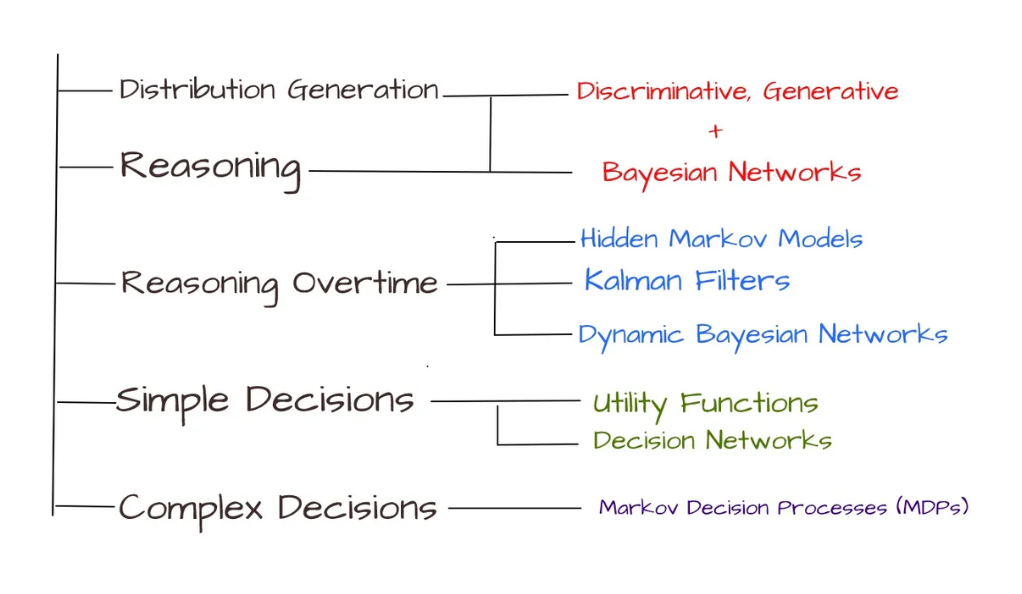As we venture into the digital age, artificial intelligence (AI) technologies have emerged as a dominant force driving innovation and business strategy. Among these, generative AI and probabilistic products play a crucial role in predicting the future, enhancing user experiences and shaping industries. By unlocking the power of probabilistic products and leveraging the capabilities of generative AI, businesses can generate considerable competitive advantage and explore a myriad of possibilities.
Understanding the Power of Probabilistic Products in AI
Probabilistic products are AI systems that generate predictions by weighing the probability of different outcomes. Instead of presenting a single result, these systems make estimations under uncertainty, allowing for the integration of risk analysis. This stands in stark contrast to deterministic models, which offer a single forecast point. Utilizing probabilistic models empowers organizations to make more informed decisions, as they are provided with a range of potential outcomes, each with a corresponding likelihood.
This type of AI system delves into the realm of probabilities to make predictions, taking stratospheric data complexity and delivering simplicity on the other end. This focus on potential outcomes rather than absolutes fosters the flexibility needed for effective decision making. They allow organizations to map uncertainties and risks, equipping them to plan and strategize based on a range of scenarios.

The use of probabilistic products revolves around understanding the uncertainties and risks in predictions. Its power lies in managing complex environments where a multitude of variables and multitudes of potential outcomes are prevalent, think: financial markets, climate changes, and healthcare outcomes. Wherever there is uncertainty, probabilistic modeling is the tool to tame it.
In tandem with machine learning, probabilistic products can learn from data, improving forecasting capabilities over time. As more data is fed into the model, the accuracy and reliability of the predictions improve, further unlocking the power of AI.
Yet, the biggest strength of probabilistic products is their ability to quantify the uncertainty of future events, allowing businesses to assess risks and rewards in a calculative manner. This characteristic makes them fundamental in domains where the stakes are high and where wrong predictions might lead to severe consequences, such as in healthcare, finance or climate prediction.
Leveraging Generative AI Technology to Unlock Possibilities
Generative AI represents another facet of the AI universe. This technology is not about prediction, rather it focuses on creation. Analogous to an artist who creates masterpieces out of a blank canvas, generative AI uses data to generate new and novel constructs, whether it be images, sounds, sequences of text, or even product designs.
Generative AI technology operates on deep learning models known as Generative Adversarial Networks (GANs). These networks consist of two parts, the generator which creates the new data instances, and the discriminator which diffuses the real data from the generated data. The generator’s ultimate goal is to fool the discriminator into thinking that the generated data is real, resulting in the production of highly realistic data.
When combined with probabilistic products, generative AI technology can unlock a vast array of possibilities. They serve to enhance the prediction capabilities of probabilistic models, allowing them to generate new scenarios and possibilities, rather than just predicting them based on past data. This results in robust and innovative solutions that can adapt to rapidly changing environments and evolving business landscapes.
Moreover, generative AI holds immense importance in a variety of sectors including content creation, fashion, art, and design where it aids in creative tasks by generating novel ideas. This technology can replicate human-like creativity, introducing a revolution in industries hitherto reliant on human brains for ideation and innovation.
The scope of generative AI is not limited to creative fields only. It has made impressive strides in the areas of healthcare, automotive and agriculture as well. For instance, it is being used to develop new drug molecules in healthcare, improve crop yields in agriculture, and design autonomous vehicles in the automotive industry.
While it unlocks new possibilities, generative AI also raises questions about the future of work and intellectual property. As we move to an era where machines can generate ideas, content, and even products, it challenges traditional notions of creativity and invention. However, alongside these questions looms the potential of a world made better and more efficient by AI.
In conclusion, unlocking probabilistic products with generative AI technology heralds a new era of innovation and possibility. As we move ahead in our AI journey, these technologies will play pivotal roles in shaping and influencing a multitude of industries and domains. Harnessing their potential will empower us to devise better strategies, create innovative solutions and reshape the world in ways we have yet to imagine.
Ainu Token aims to offer impartial and trustworthy information on cryptocurrency, finance, trading, and shares. However, we don't provide financial advice and recommend users to conduct their own studies and thorough checks.



Comments (No)